A Studio Visit and Interview with Artist Renee Pupetz
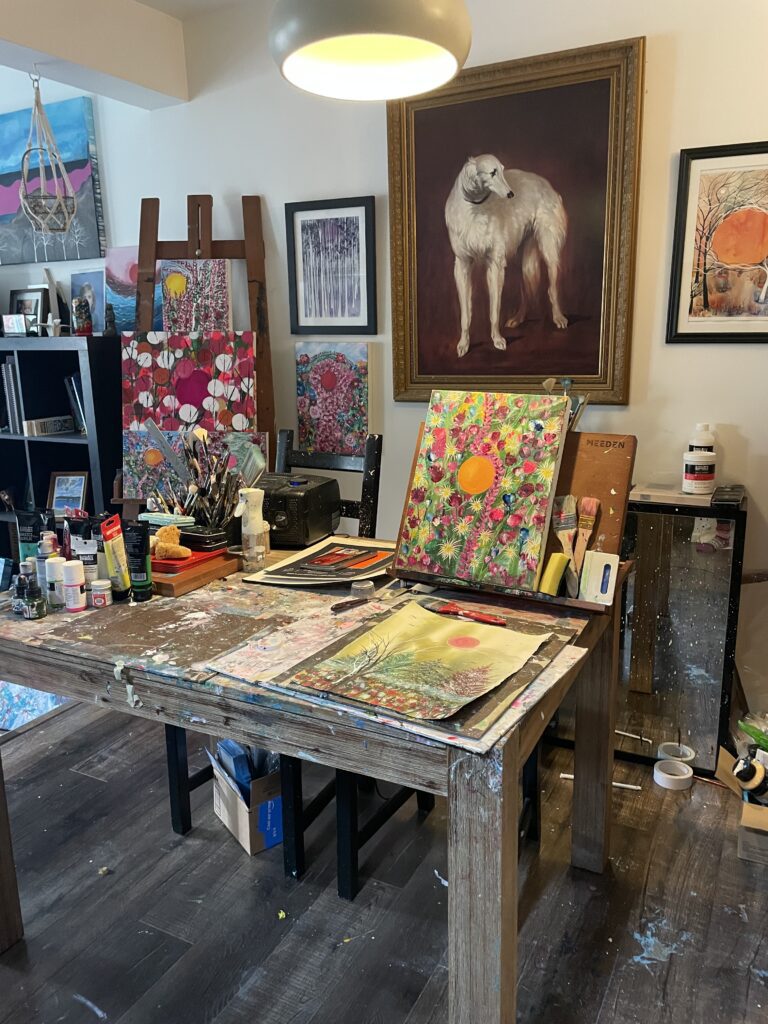
This studio visit brings us into the world of painter Renee Pupetz, who lives in British Columbia, Canada. In this conversation, she discusses how she returned to painting after a challenging period in her life, and how picking up a brush each day helps her feel steady and curious about what will happen next. She paints in the lower level of her home, where the dining area has turned into her main workspace. When she walks through the door, she steps right into a table full of paints, jars of water, brushes, and canvases in different stages of drying. There is a quiet comfort to the space. It carries the faint smell of paint, wet paper, and everyday life. Her two cats wander around, curl up near her, and keep her company while she works.
Renee shares what her days look like in the studio, how she prepares her supplies, and how ideas come to her as she works rather than in advance. She talks about the small shrine to her father in the room, the thrifted painting of a hound dog watching over her table, and how she often talks to her dad while she paints. She also lets us into her routines, from the way she arranges her tools to the moments she steps back to look at a piece or snaps a photo to see it more clearly. This interview is a calm, honest look into her space, her habits, and the simple things that keep her returning to the table each day.

Renee Pupetz is a self-taught visual artist living in British Columbia, Canada. She began painting before having her two children, but only for a brief period. She resumed painting after a dark period that changed her life and the way she lived. Painting would not only bring her tremendous joy and lead her into new worlds to discover, but also serve as a healing tool that motivates her to keep painting every single day. The lush landscape around her inspires Renee, and she often catches the “conversations” between the trees, the Sun and the stars. Her artwork tends to lean more toward the “unconventional.”
She prefers bold, bright colours, like those seen in her abstract floral work and leans a little toward the surreal and abstract. Renee favours watercolour and acrylics but also enjoys fluid arts and mixed media. Being an intuitive artist, she lets her inner guide lead her through the process, thriving on the element of surprise, rather than a mapped-out plan. Sometimes an idea will ignite her and lure her to the table, which is always fully stocked with every type of medium and tool. She invites the viewer into her colourful world to challenge or explore how we perceive nature and its interconnectedness. Renee is an exhibiting member of The Federation of Canadian Artists, has participated in several juried art exhibitions around the world, has been published in numerous books and magazines, and has won awards, including the recent BoldBrush award for “Abstract.”
1. Can you walk us through your studio space? What’s the first thing you see when you walk in?
The entire downstairs of my townhome serves as my studio, but I work mainly in the dining area, which we no longer use for eating. So, when I walk through the front door and past the foyer, I see my big sturdy wooden table littered with bottles/tubes of paint, a table-sized easel, lots of paintbrushes and tools of various sizes and an air purifier that runs 24/7. A large painting of a hound dog from the 19th century hangs on the wall behind the table that I picked up from a thrift store. There is also a large floor easel in the corner beside the table that I hardly use.
It is more storage to keep a larger piece off the floor or drying/curing. Beside my table are also two large cabinets. One of them holds various art supplies, and the other is a white China Cabinet that I promised my dad I would get before he died three years ago. It is filled with my father’s China and various heirlooms. It even houses the ashes of my former beloved cats. On top of the cabinet is a small shrine to my father. It includes a picture of him being handed a large eagle statue, with a big smile on his face. Scattered around his picture are various healing stones and trinkets he held dear. This helps inspire me, and I often have conversations with him while I paint. My walls are covered in painted canvases, with more leaning up against the wall or furniture. There are also three cat trees for my two cats, with whom I spend my days.
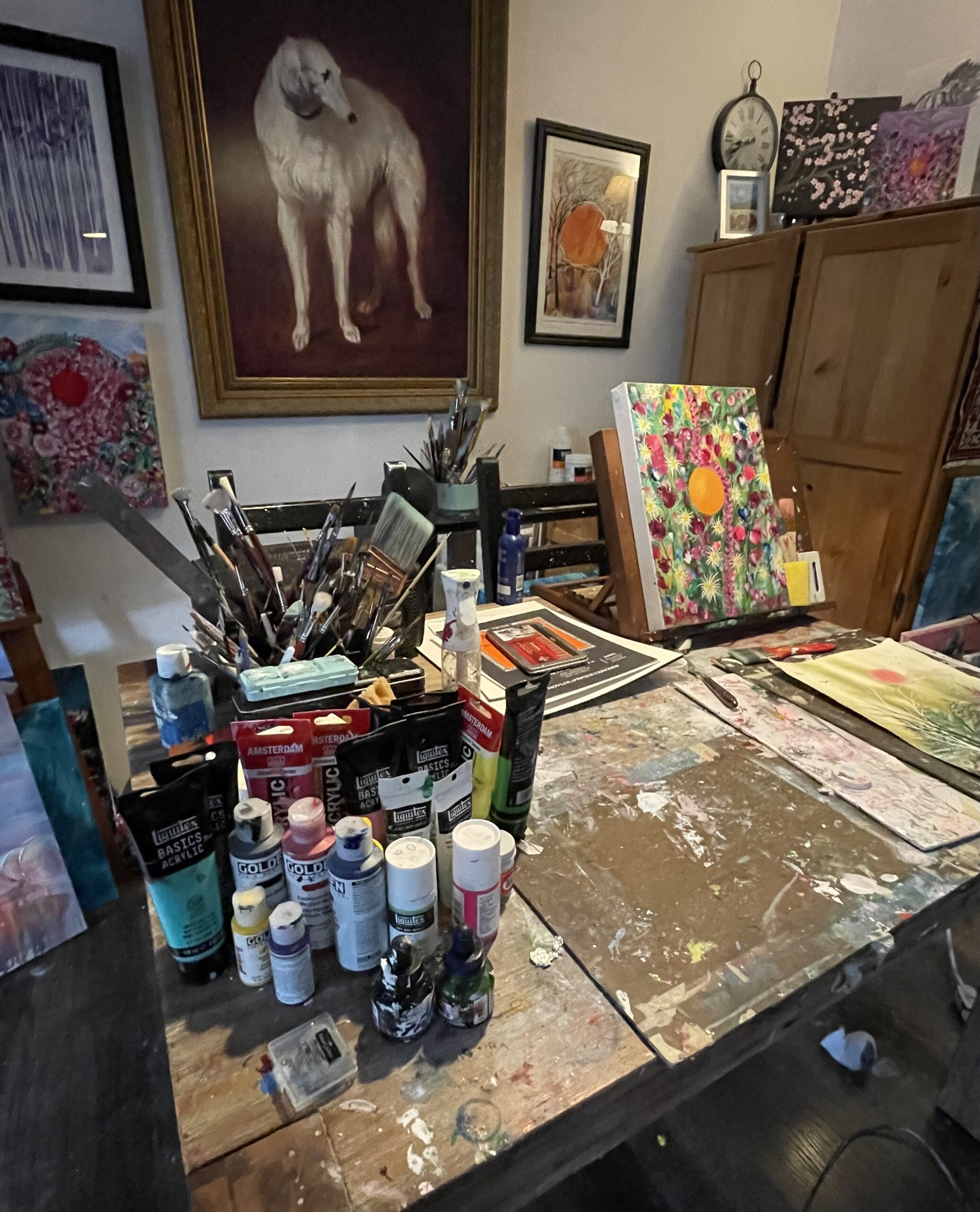
2. How is the space arranged to support the way you like to work on a painting from start to finish?
My table is where I spend most of my time at work. I use the chairs around the table to store extra paint, paper towels, and palette paper. If I am not using the table easel, I move it to the back of the table. My table is never bare. It is always covered with work materials and artwork. The previous session can be observed! I am not a neat-and-tidy painter. When I paint, I am relaxed in some parts, and at other times I am very dynamic, throwing things that are in my way on the floor or dumping out bins, looking for that specific colour of paint I didn’t know I would need (as I am primarily an intuitive painter). I may have a piece of the puzzle, but the rest comes together at the table. I try to prepare for a session beforehand, but I always have my favourite brushes, knives, water sprayers, syringes, sponges, blower and paints right on the table at all times.

3. What materials or tools do you keep closest to you while working?
Paper towels, brushes, paints, masking fluid, a container of salt, a pencil and eraser, a hair dryer and my precious double water bin. Of course, a canvas or a taped-up sheet of paper on a board is right in front of me as well. I also keep my music speaker near me and play music that inspires me. It’s an essential.
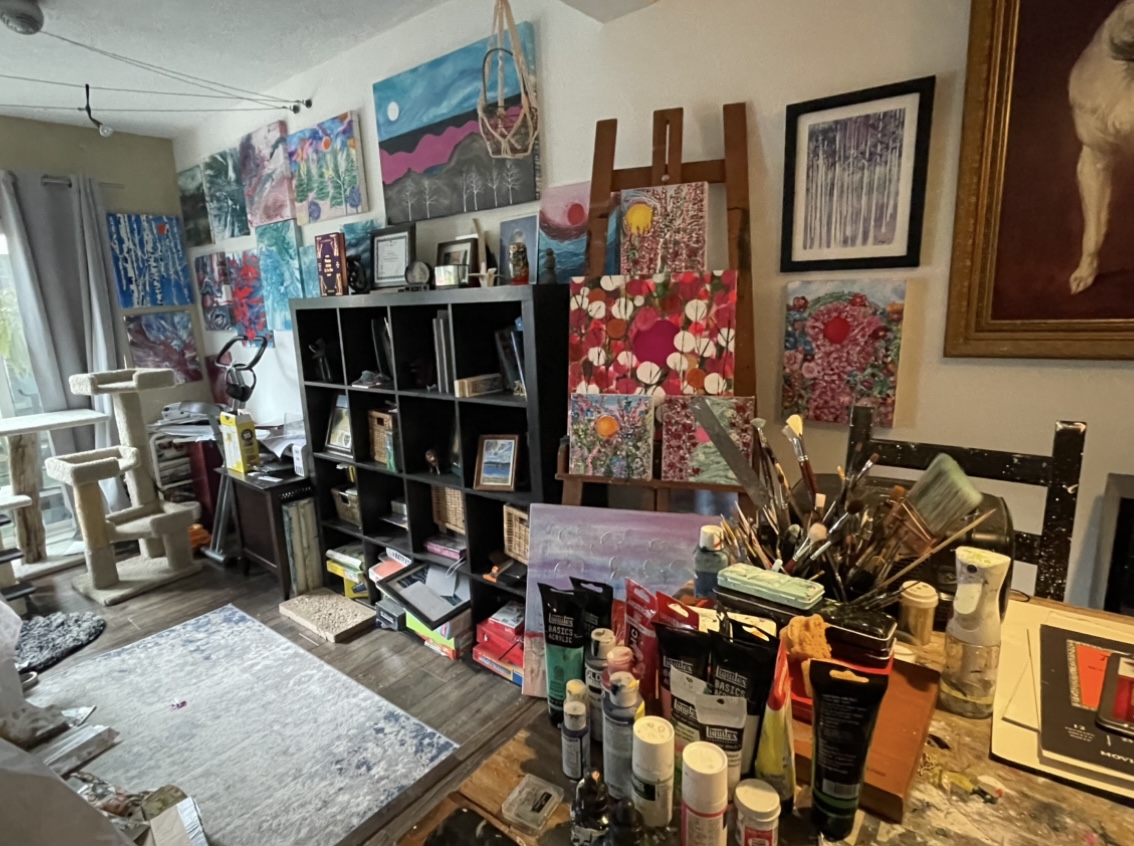
4. Are there certain books, film stills, or notes that stay in the studio as part of your process?
No, not at all. It’s all in my head, and as an intuitive artist, I don’t have a mapped-out plan or anything like that. I like to be spontaneous and love surprises.
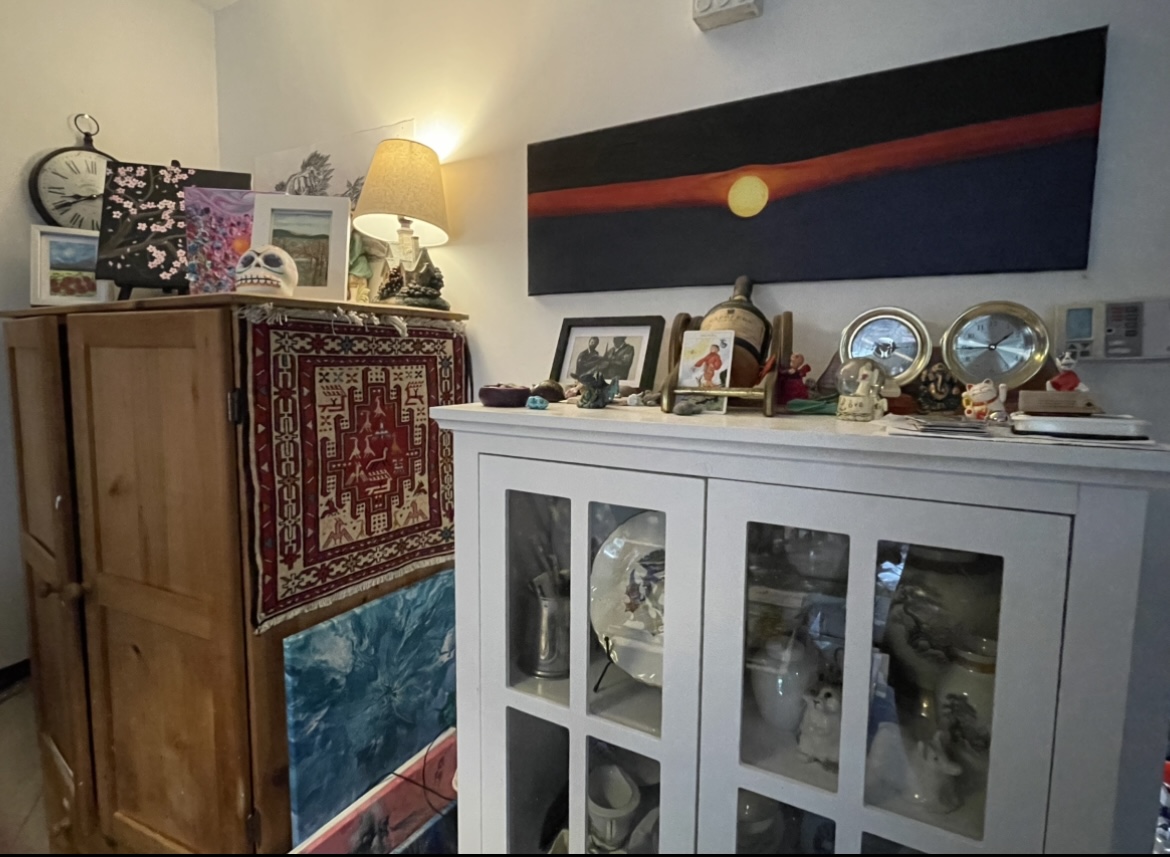
5. How do you usually keep track of ideas as they move from your journals into the canvas?
My process doesn’t work that way. I tried using painting journals, etc., and I only ended up wishing it were on canvas or good-quality cold-pressed paper. So I don’t even practice because to me it’s all practice. Preparing the table, organising supplies, and creating my actual paintings are practices. I’ve only discarded two or three works of art. It is rare. I will work on it until I find the solution to all the problems, if any. Creating art is my practice. My inner guide prompts me to the very end.
6. What does a typical day in this studio look like for you?
It is usually pretty much the same ritual, but it depends on whether I have a spark/idea already or nothing at all. If I do have an idea, then I prepare the necessary supplies, such as masking fluid or specific colours of paint, which I may need. I fill my water container and spray bottles and have a paper towel ready to put under my work, as I often use a lot of water when working with watercolour. I make sure I have all the possibilities on hand. I no longer always tape down my paper. I like to be able to manipulate it, and sometimes don’t like it on a board. Also, I sometimes find myself so eager to get started that I don’t want to waste any time! If I don’t know what to paint, I start the process noted above, and it usually starts to develop like magic..

7. How does the light in this space change the way you approach a painting?
Lighting is essential to me, especially for later photography on my website/Instagram. I have certain areas on my sofa or one of the cat trees where I like to place my art, capturing that perfect natural light, but it changes with the weather and seasons. I live in Vancouver, which is very dark during the fall and winter. At times, I have to use my kitchen, which has bright lighting that I dislike, but after several adjustments and possibly the addition of a ring light, it works out okay. I have a migraine disorder, so I need to wear prescription rose-tinted glasses 24/7. Perhaps that is why my paintings are so colourful. My world is pink. I have a teardrop-style overhead light over my table. I like very dim lighting due to my condition.
8. Do you have works in progress visible around the room, or do you prefer to focus on one piece at a time?
It depends on the medium and substrate I am using. If it’s watercolour, it’s done in one sitting. If it’s acrylic or inks on canvas, it can be one day or several. I will have the canvas art on the large easel, drying/ curing, and continue doing watercolour in between.
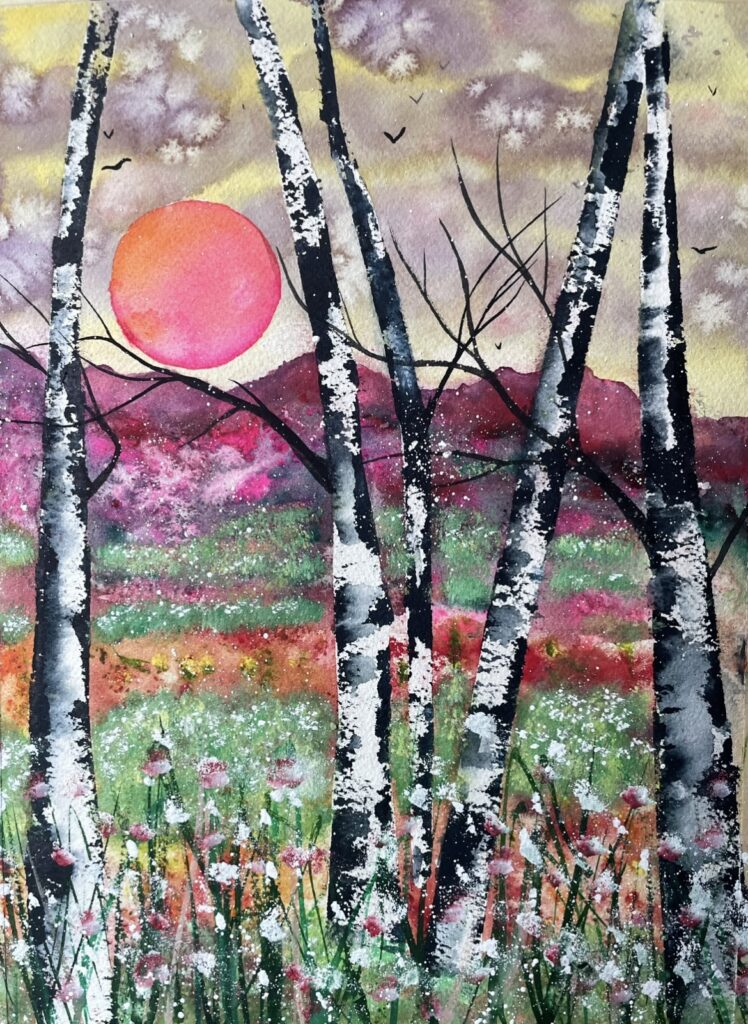
9. Is there a spot in the studio where you usually pause to step back and look at the work differently?
I step back from the table, or I often photograph it to remove myself even more from it. I find this effective for me.
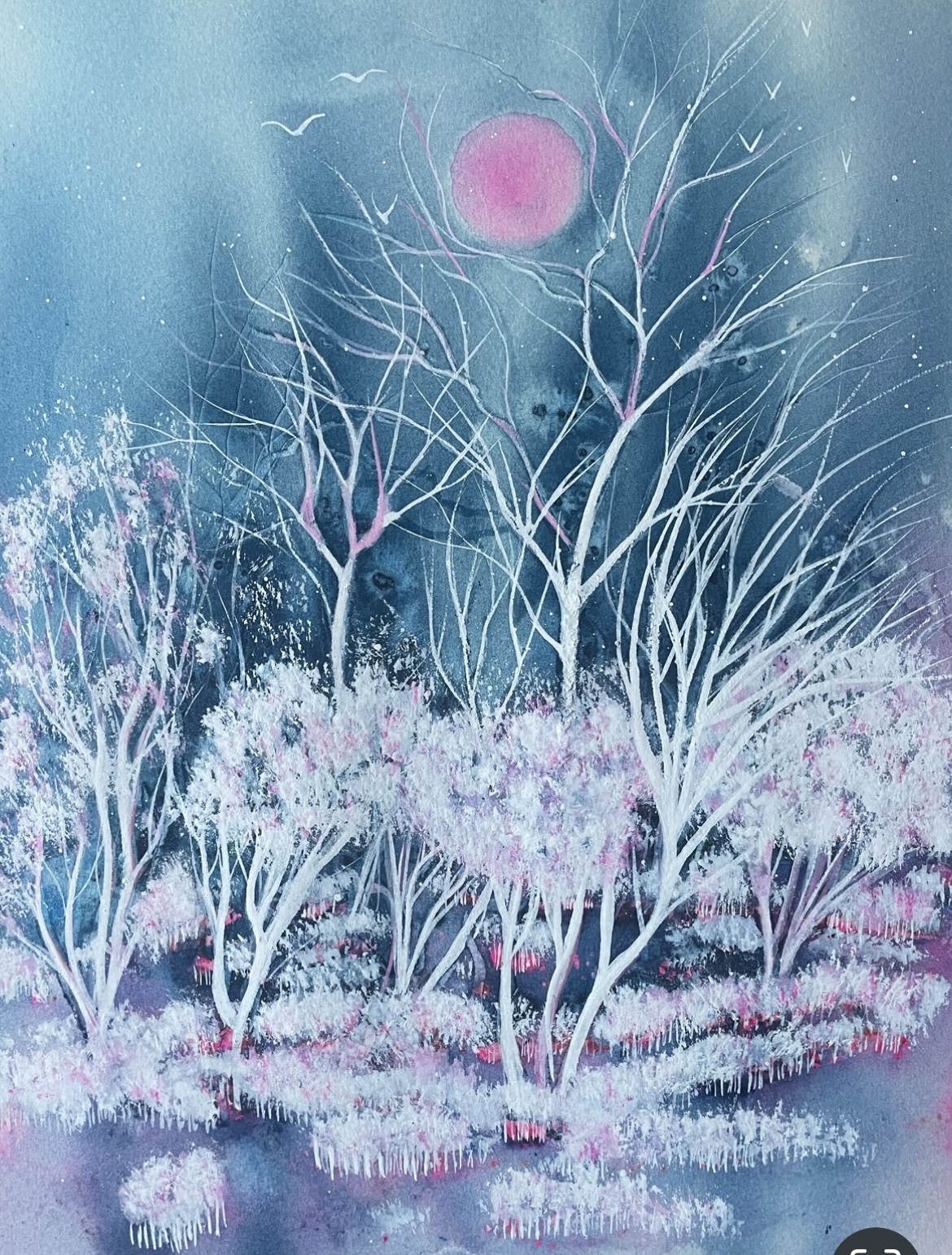
10. If you get a chance to set up your studio anywhere in the world, where would it be?
It would be somewhere in the mountains with lots of silence except for the birds, insects, and running streams. I would like to have some access to civilisation when desired, as I have two teenagers to consider.
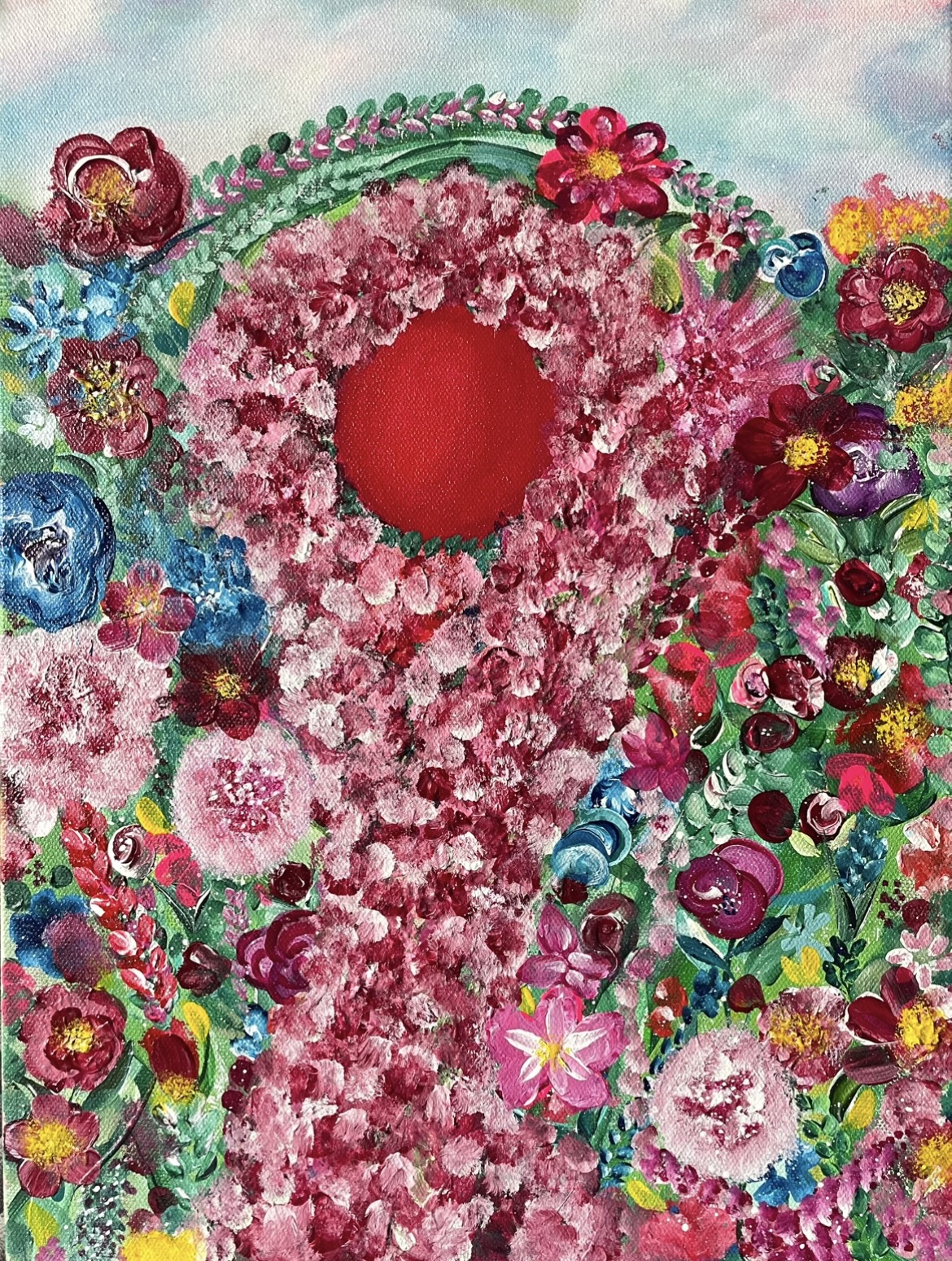
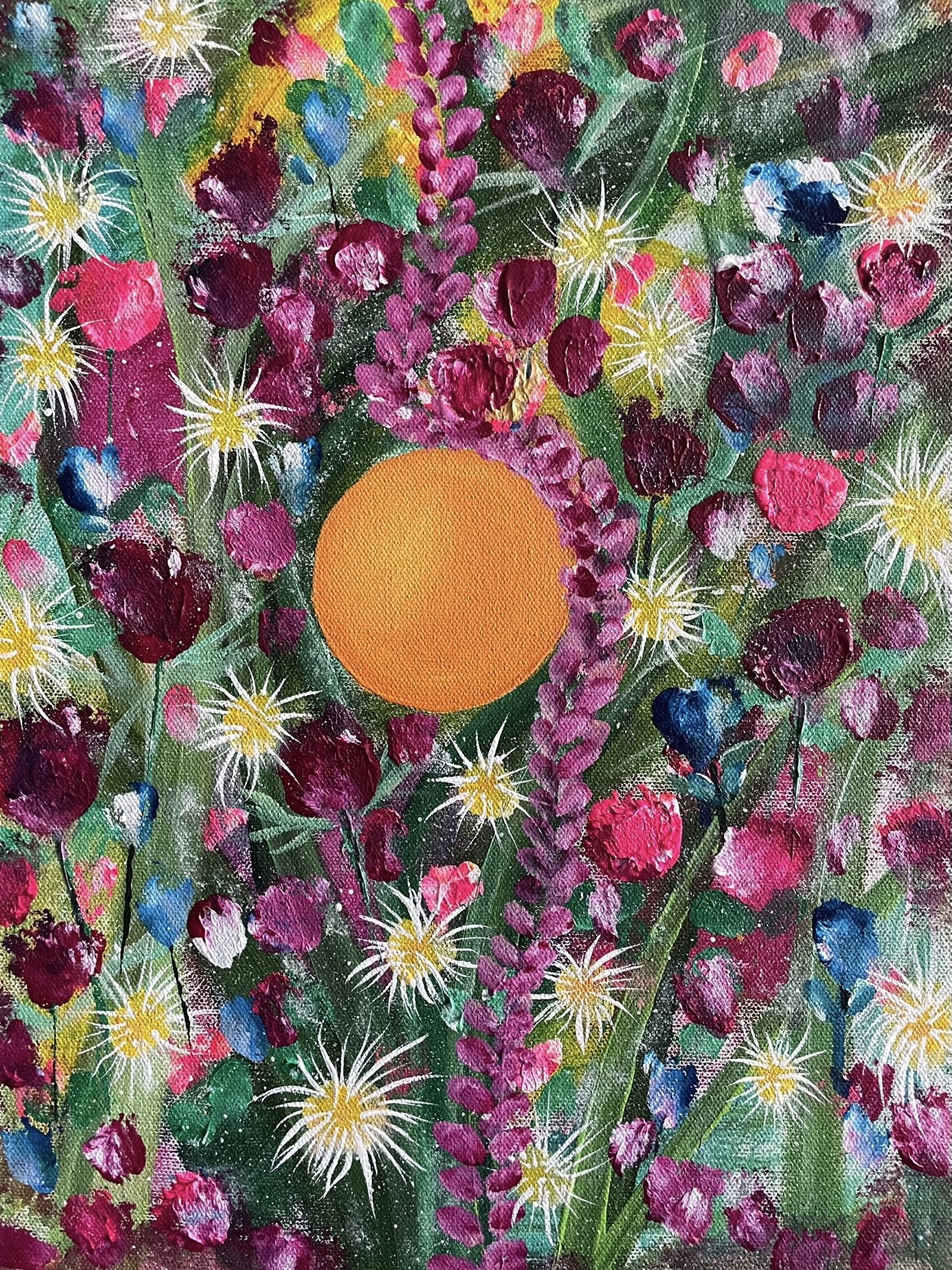
The studio feels lived-in, warm, and full of quiet movement. It is a place where life and art mix naturally. You can picture paint tubes and brushes scattered on the big table, canvases leaning against the walls, and her cats moving from one perch to another. There is a gentle scent of paint, water, and paper, but also the feeling of a home space layered with memories, like her father’s cabinet and the small shrine she keeps for him.
It doesn’t feel polished or staged. Instead, it feels like a space where things happen as they need to happen. There is a steady hum from the air purifier, soft background music, dim lighting because of her migraine glasses, and the sense that ideas come and grow here without pressure. It holds stillness and sudden bursts of activity, the calm of quiet mornings, and the spark that keeps her coming back to the table every day.
To learn more about Renee Pupetz, visit the links below.
